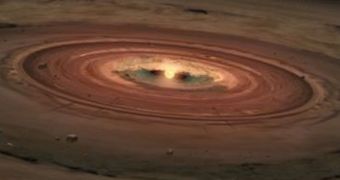Gas giant-class extrasolar planets, objects roughly the same size as Saturn and Jupiter, could host habitable exomoons in their orbits, a team of researchers determined in a new study. These alien worlds would need to orbit inside the habitable zones of their parent stars, the group argues, but this is not a guarantee that the extrasolar moons would be able to support life.
In the new investigation, McMaster University postdoctoral fellow in astronomy René Heller worked with colleague Rory Barnes from the NASA Virtual Planetary Laboratory and the University of Washington to investigate if exomoons around gas giants could hold life as a general rule.
Their work revealed that the heat released by these planets as they form combines with the vast volumes of heat and radiations released by the host star to create the perfect scenario for scorching these moons. In other words, it is entirely possible that exomoons will get baked well before they have the chance to develop an environment capable of supporting life.
Over the past few years, astronomers have determined that extrasolar moons may be a much better place to start our search for extraterrestrial life. Most exoplanets identified to date are much larger than Earth and therefore unlikely to support even the most basic microorganisms on their surfaces. Unfortunately, detecting and studying exomoons directly is impossible with current telescopes.
The purpose of the new research was to provide a theoretical understanding of how heat released by an exoplanet that has just finished forming can influence the development of its moons. The main result was that the smaller objects can easily lose all of their water within a few million years, maybe even less, something that would leave them barren and unable to support life as we know it, Space reports.
“An exomoon's habitability is of course constrained by its location in the stellar habitable zone, but it also has a second heat source – its host planet – that has to be accounted for. With regard to this second source, our study shows that at close range, the illumination from young and hot giant planets can render their moons uninhabitable,” Heller explains.
A paper detailing the research has already been accepted for publication in an upcoming print issue of the International Journal of Astrobiology. Regardless of the dangers posed by exoplanetary gas giants, their moons still retain a better chance of supporting life than frigid, icy moons such as Titan, Enceladus, or Europa in our own solar system.
“Earth-size exomoons that could soon be detected by our telescopes might have been desiccated shortly after formation and still be dry today. In evaluating a moon's habitability, it is crucial to consider its history together with that of its host planet,” Heller concludes.

 14 DAY TRIAL //
14 DAY TRIAL //